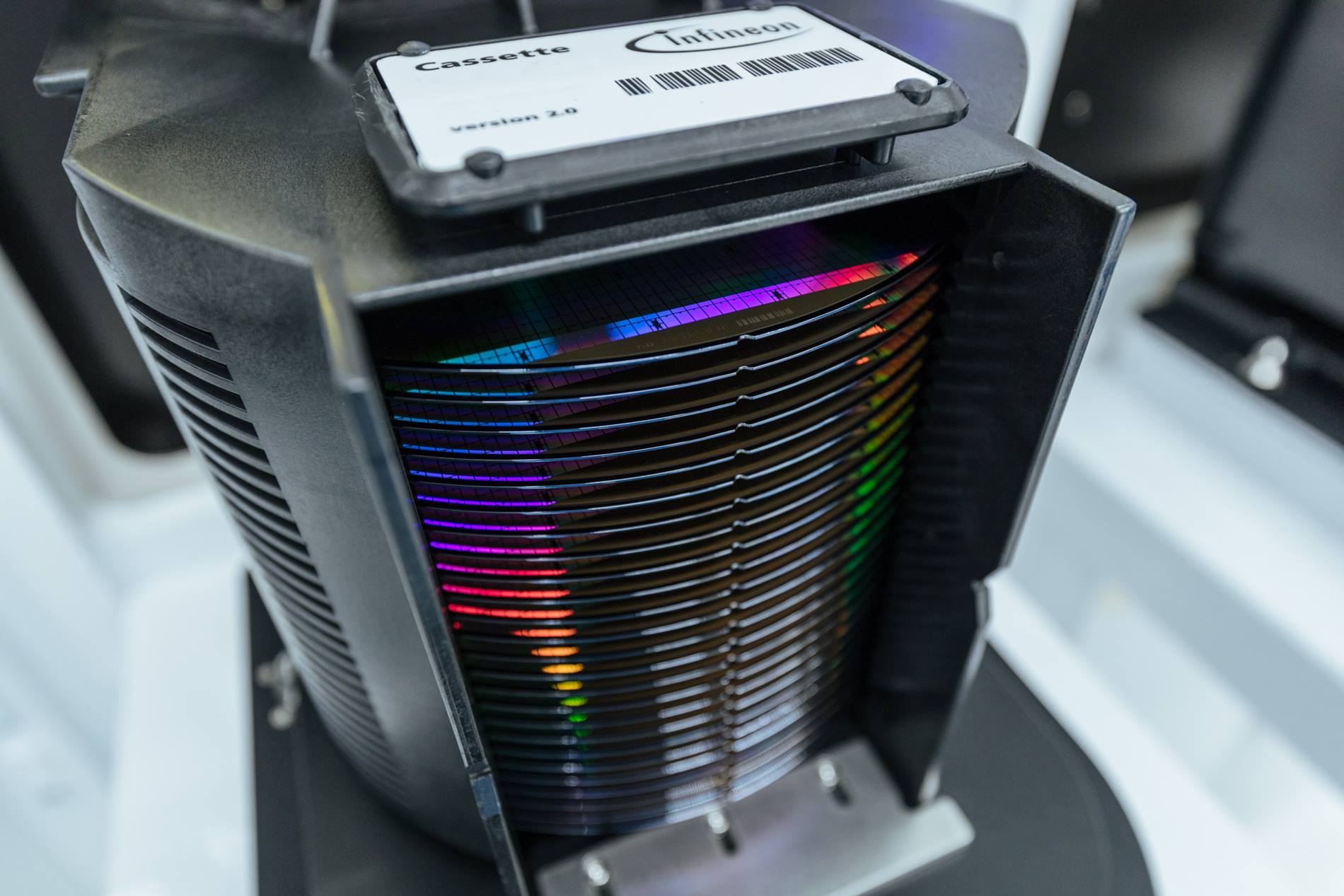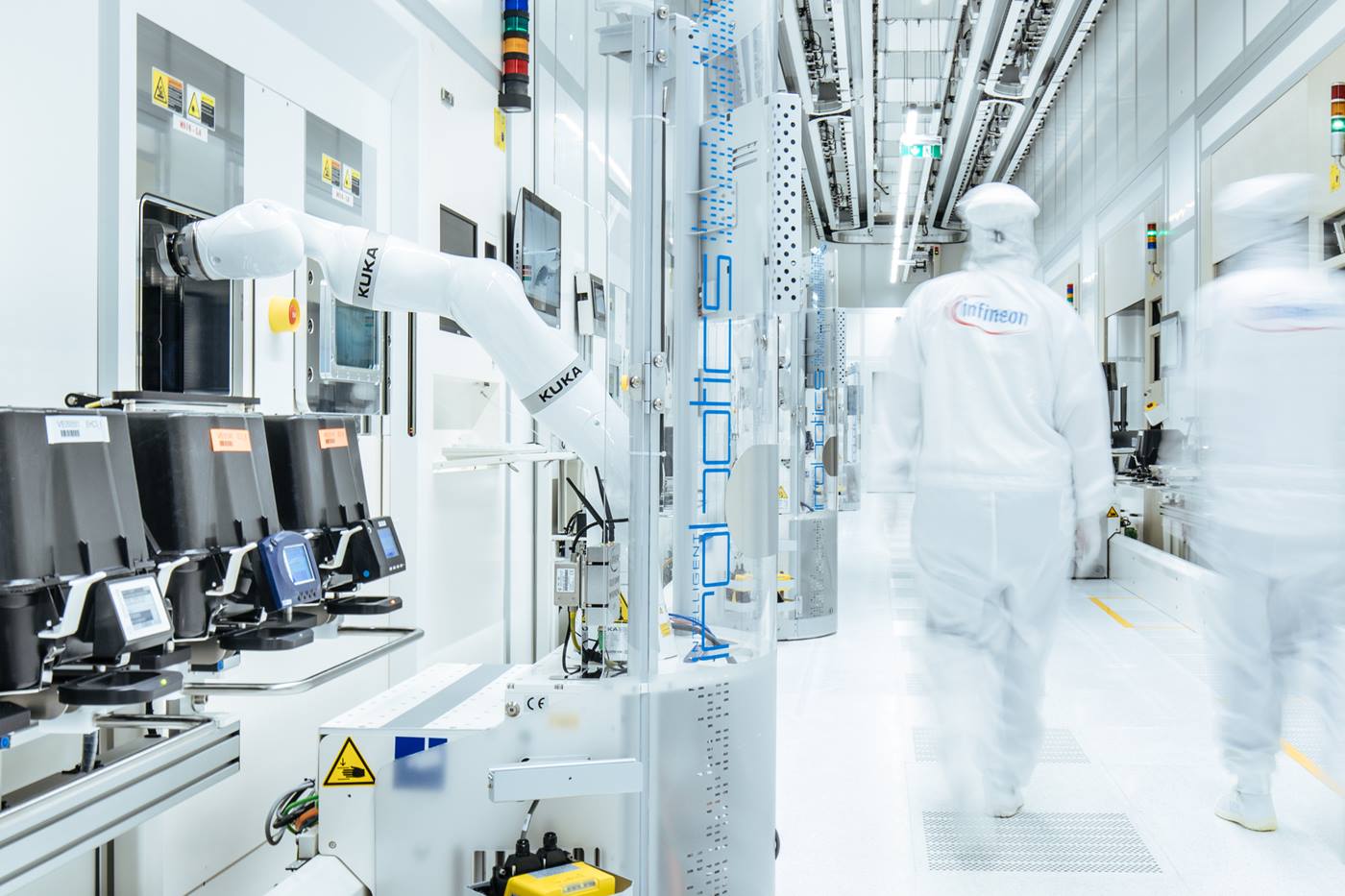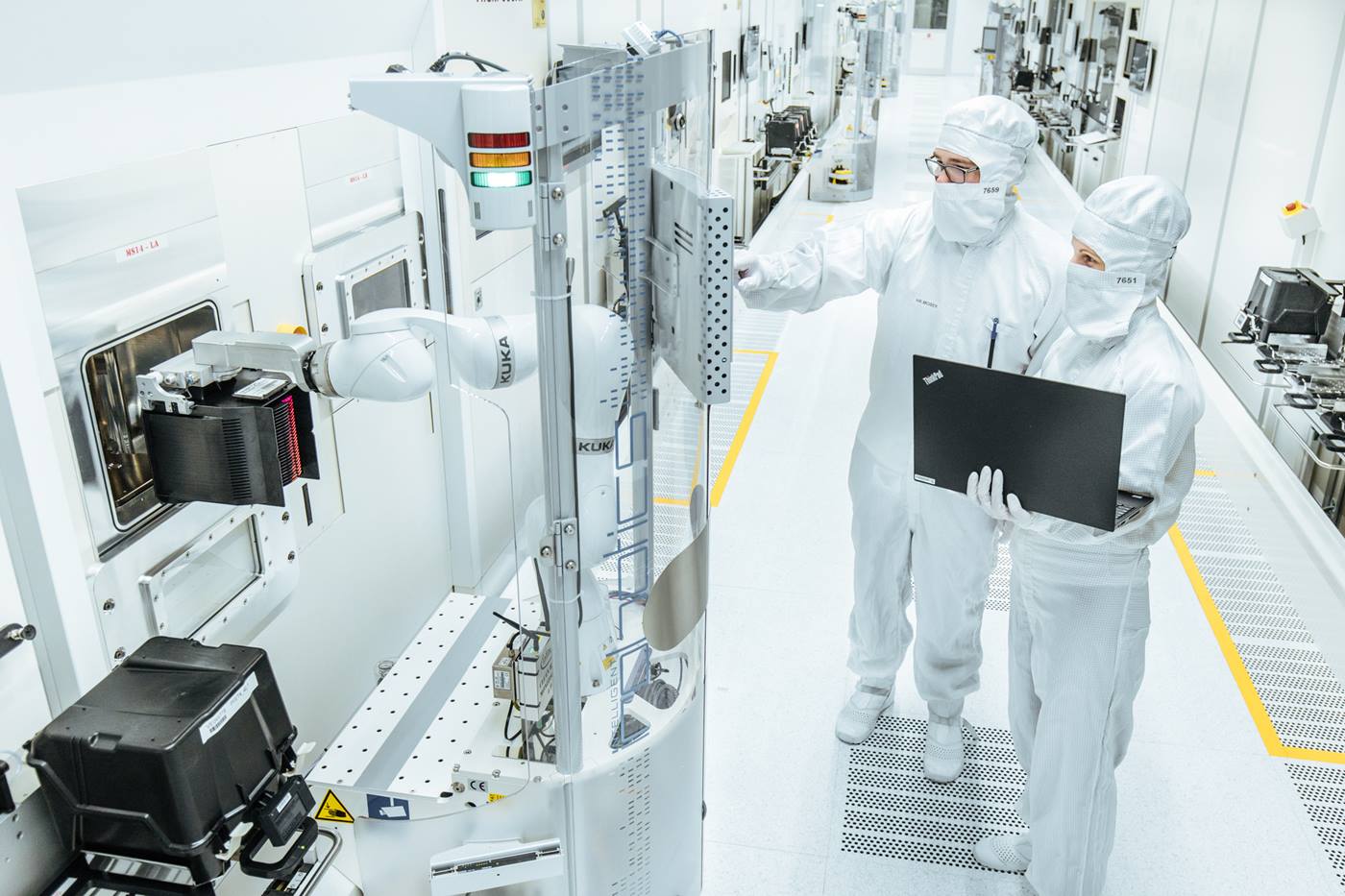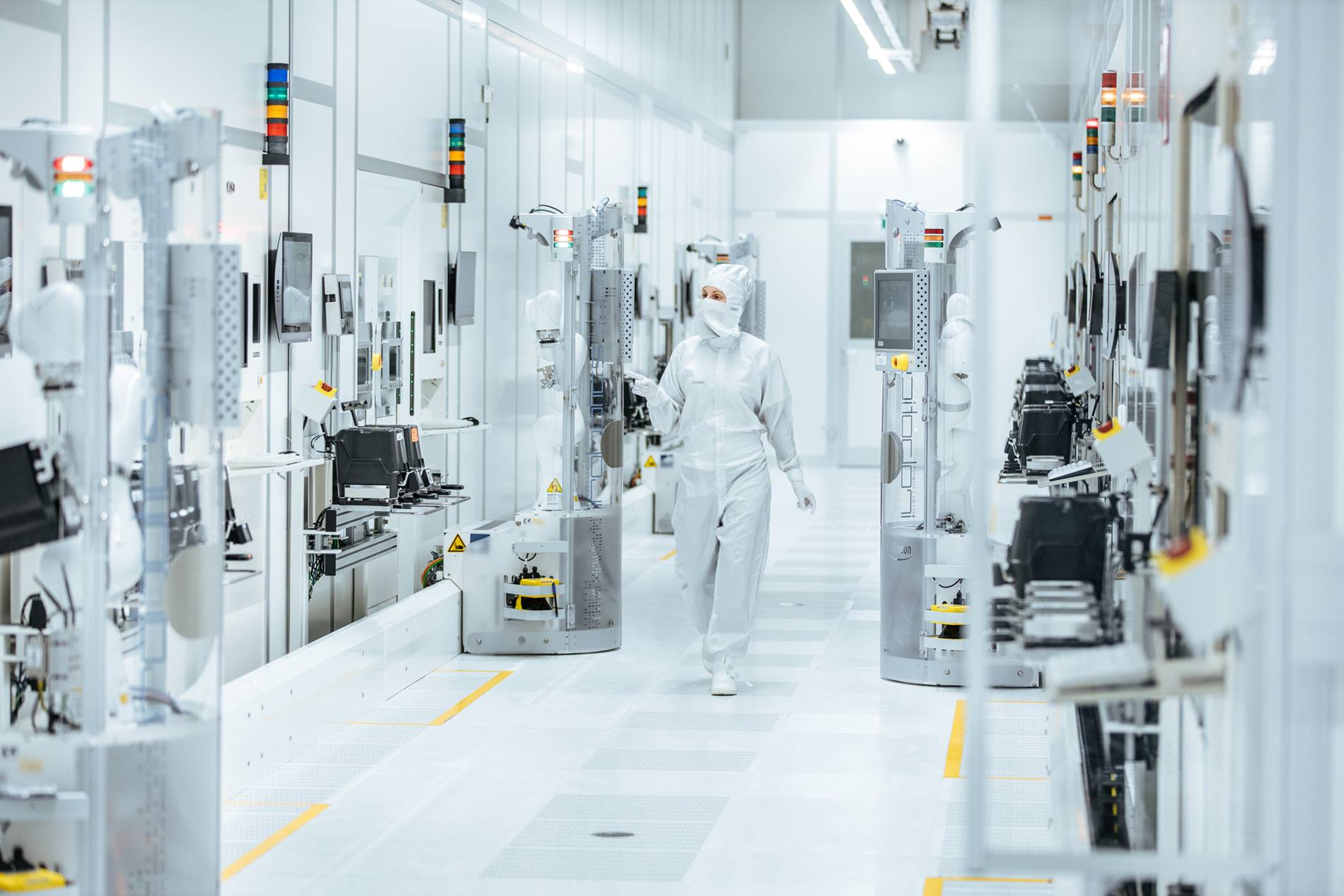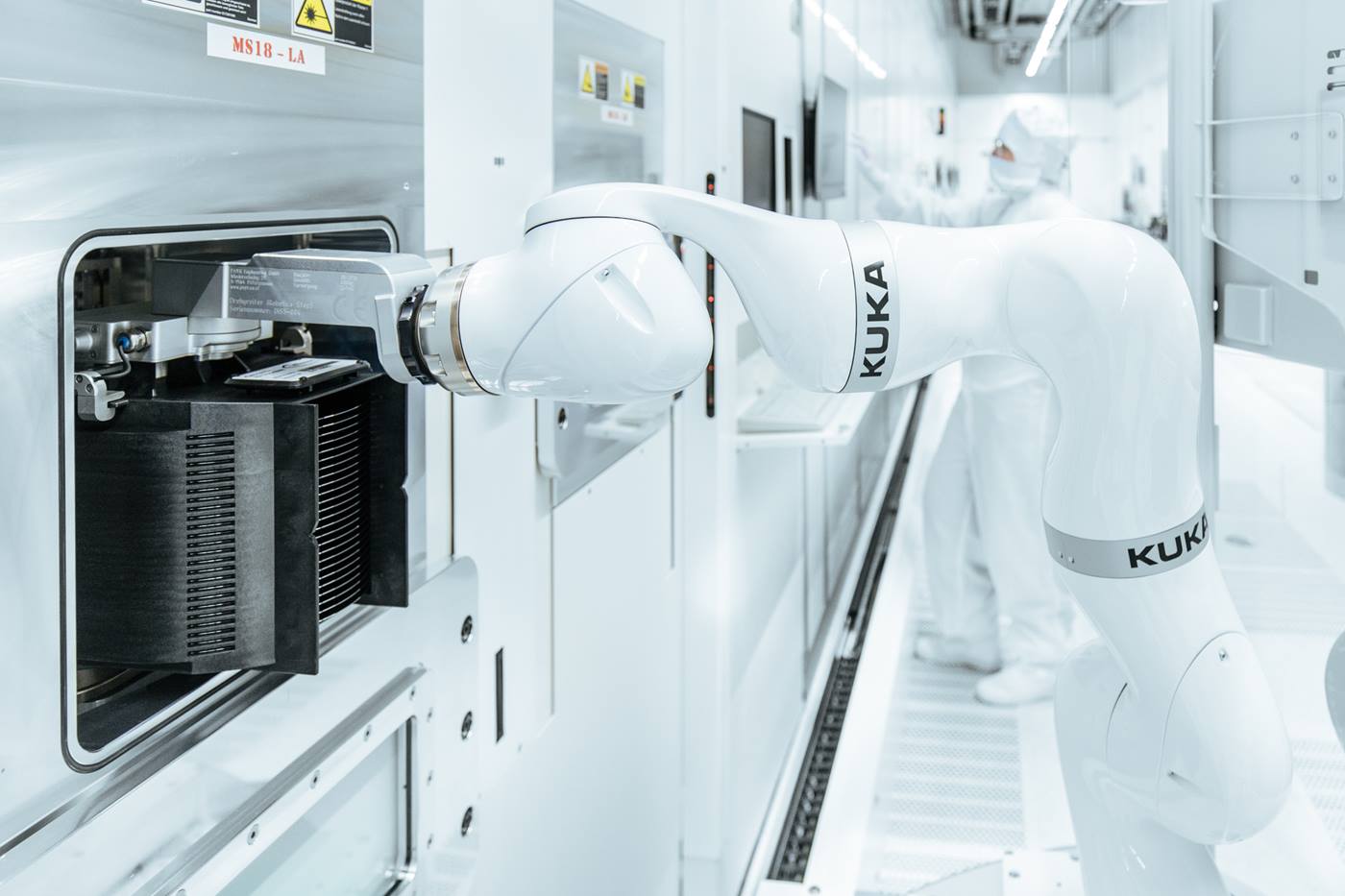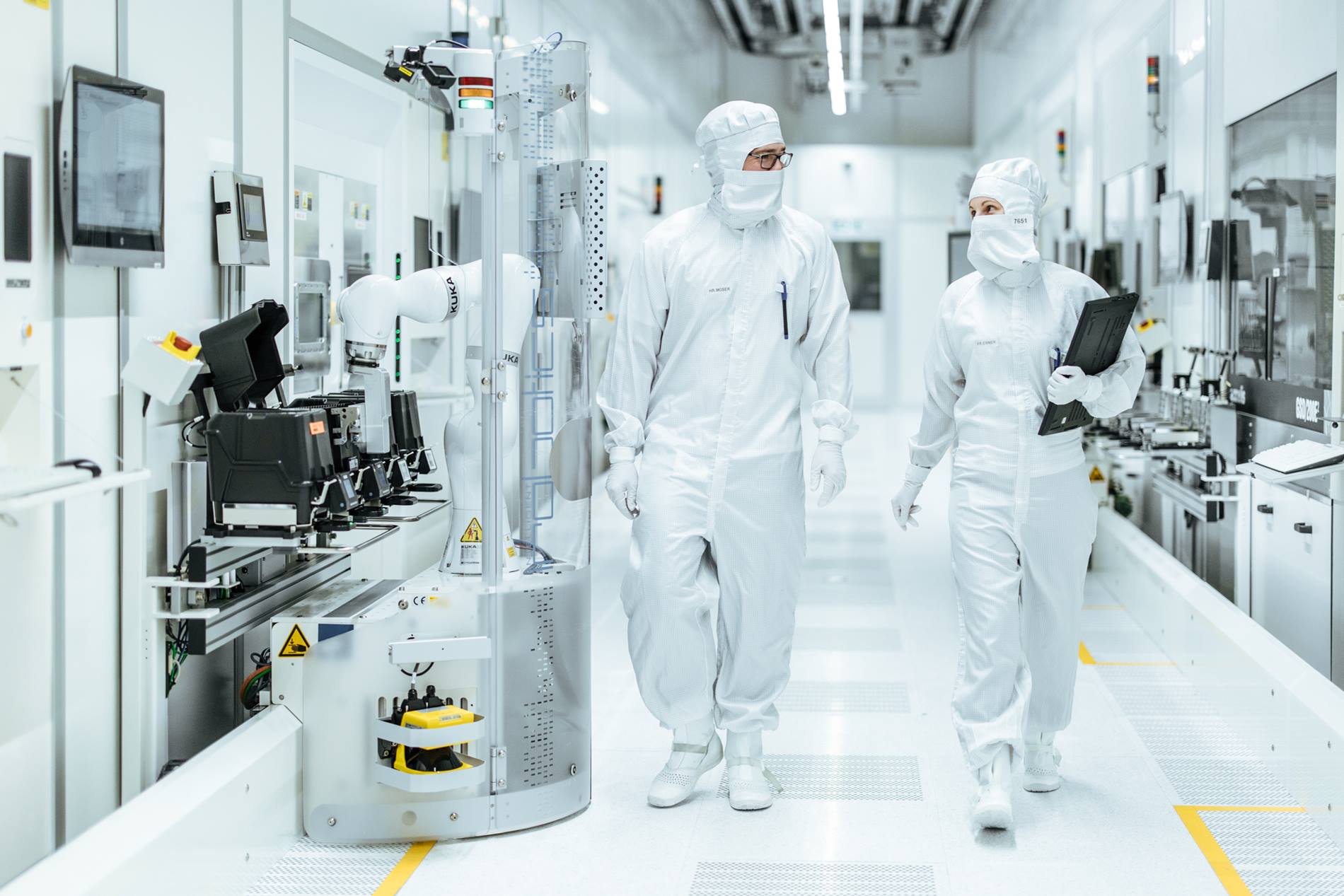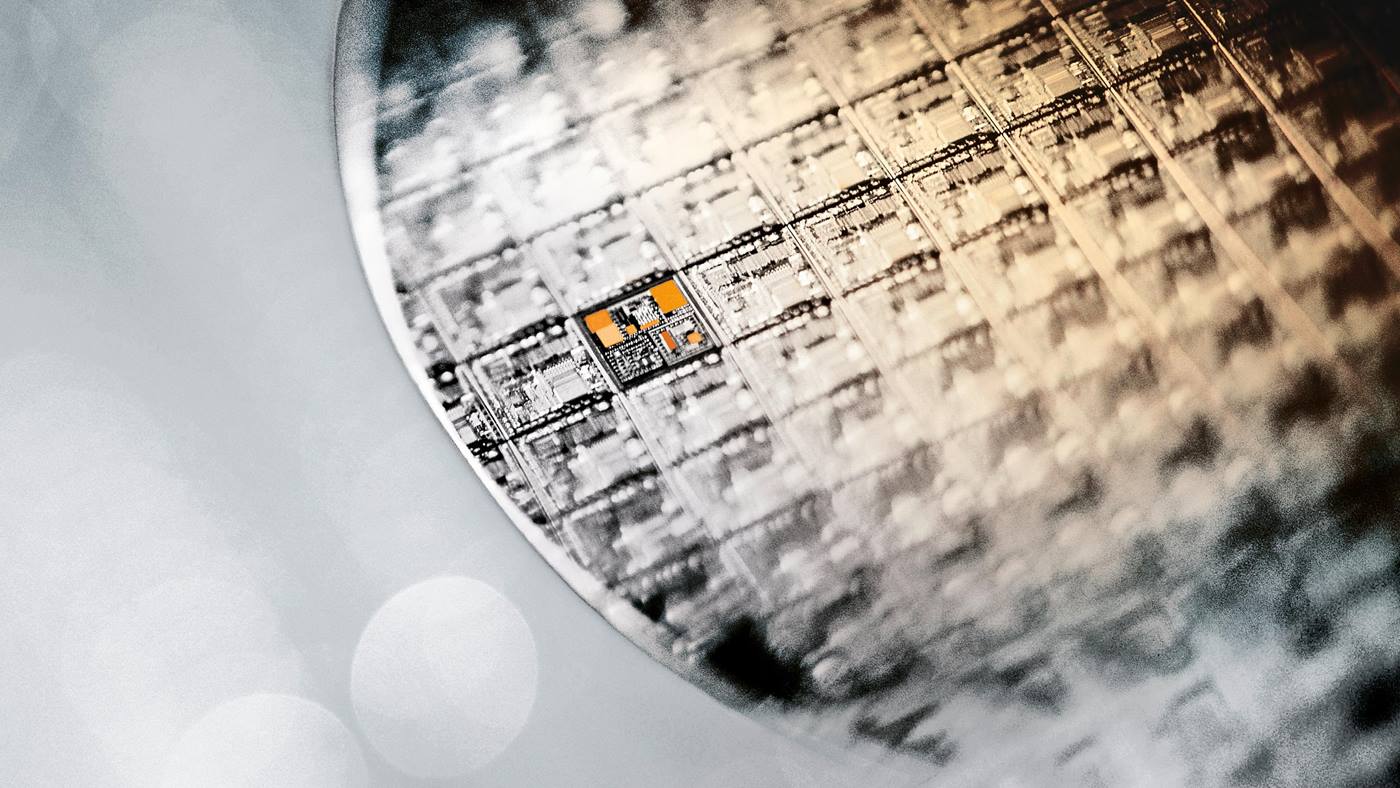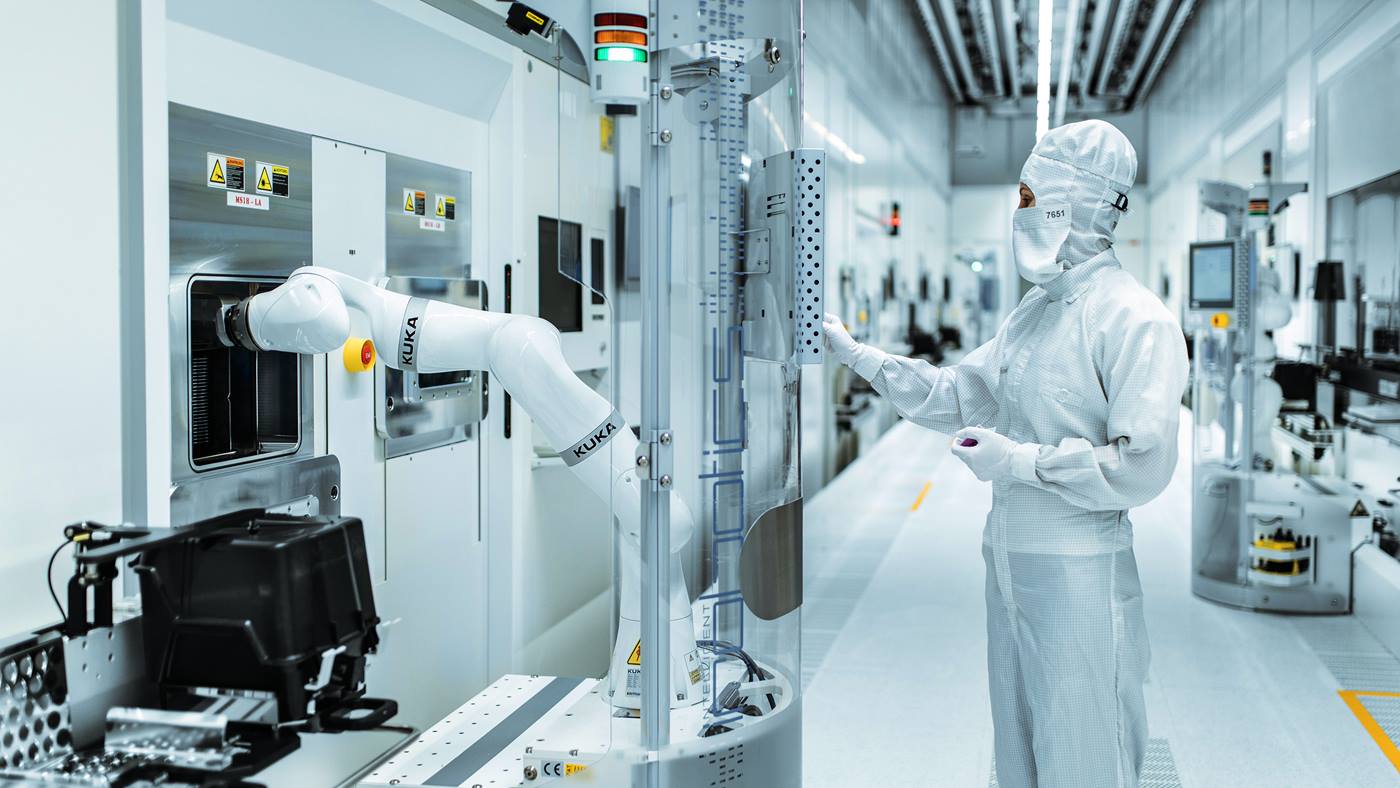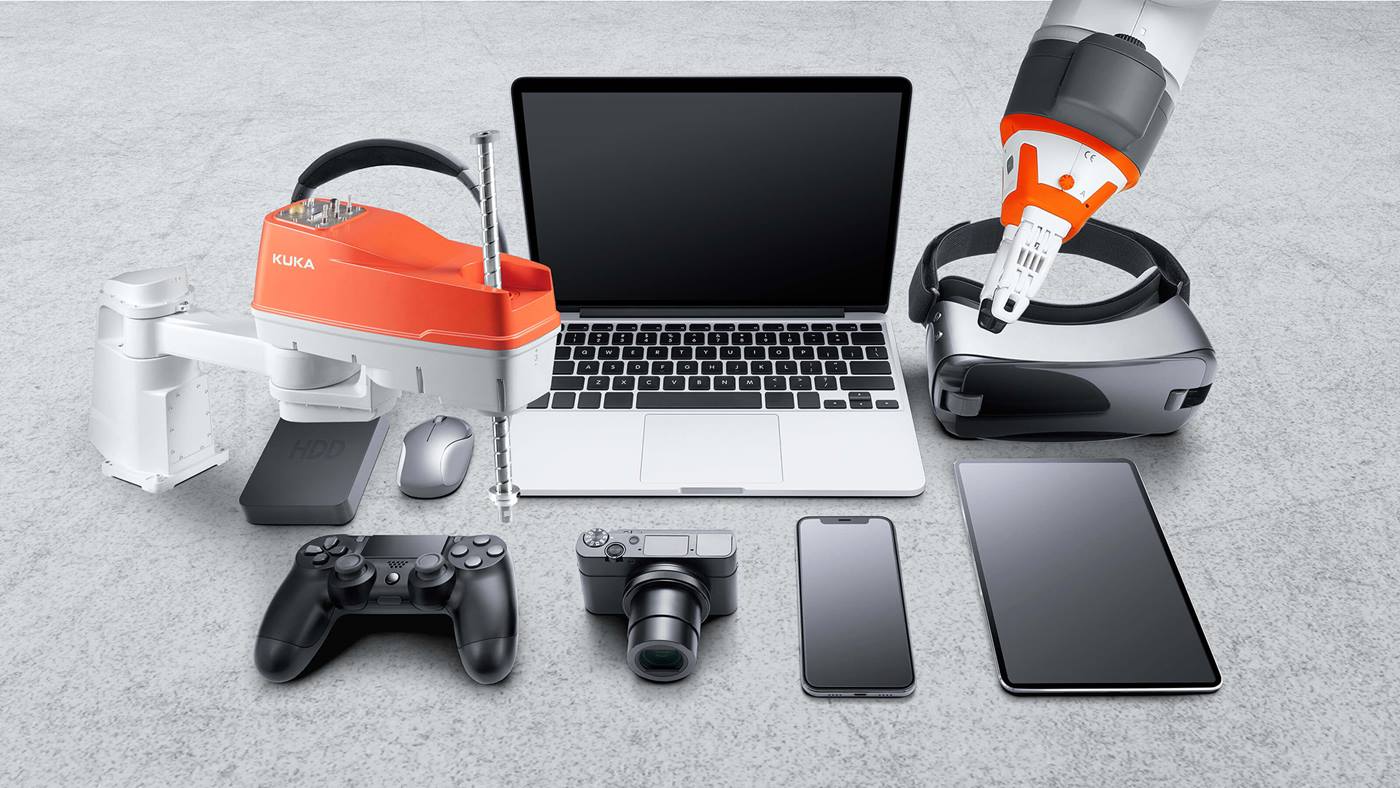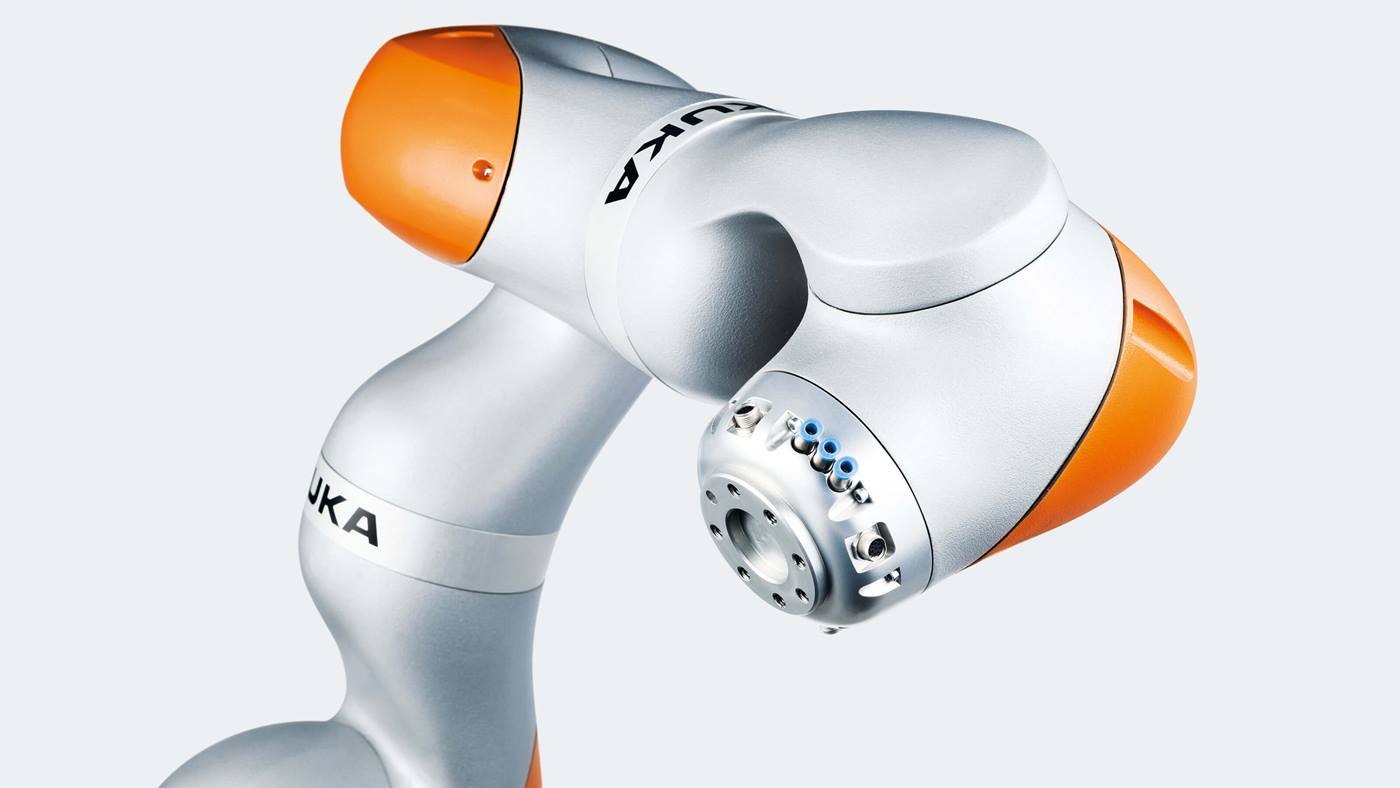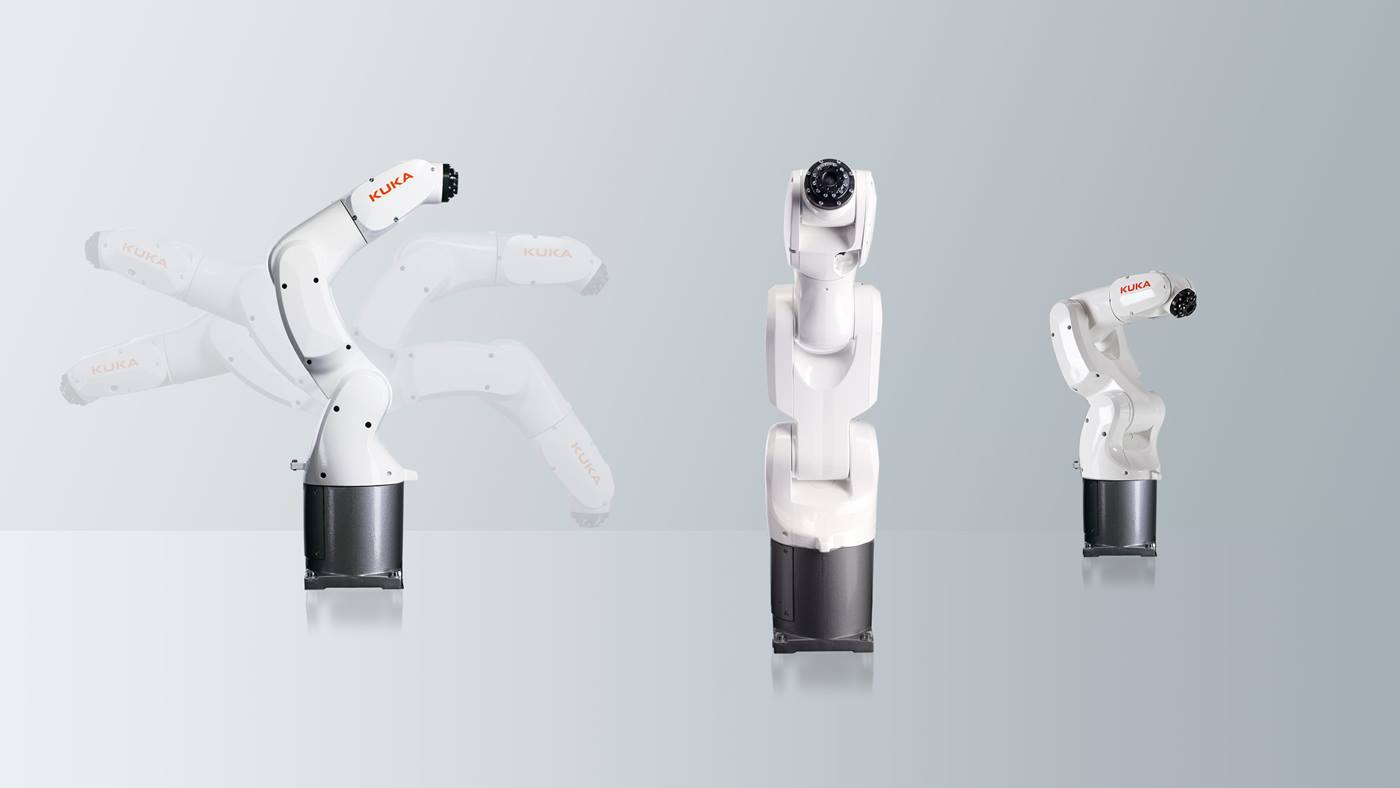At the plant of KUKA customer Infineon, 17 sensitive wafer handling robots ensure efficiency and safety
No, silicon wafers are not really a collaborative product: measuring as little as 40 micrometers in thickness, many silicon wafers are thinner than a hair and yet have a diameter of 150 to 300 millimeters, which is roughly the size of a pizza. This highly fragile material cannot be picked up by hand. To turn these sensitive silicon wafers – a cassette full of which can have the value of a mid-range car – into chips, they must pass through up to 1,200 process steps during fabrication. And, for each of these, they need to be transferred to a different automated processing station. A clear case for a robot like the LBR iiwa CR. These power semiconductors – used, for example, in cars, smartphones, refrigerators or in server farms and the traction units of locomotives – are produced at the Infineon site in Villach, Austria.


